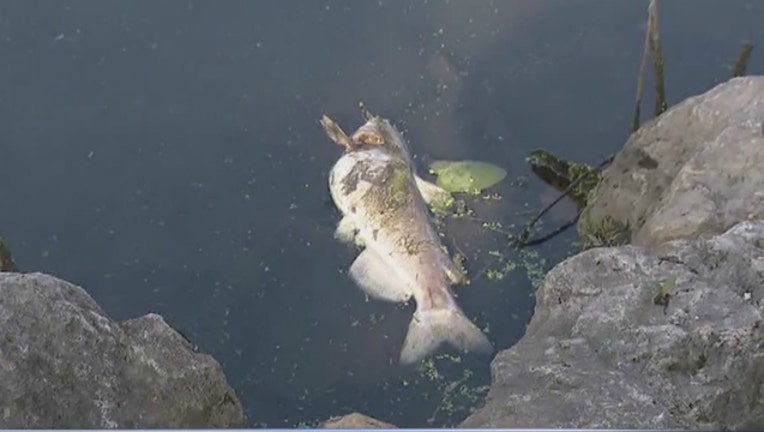3,000 fish killed by cyanide leak at Indiana steel factory: state officials

PORTAGE, Ind. (Sun-Times Media Wire) - Water tests in Indiana show that cyanide concentrations have fallen to acceptable levels about a week after a steel plant leaked toxins into a tributary of Lake Michigan, killing several thousand fish and shutting down part of the Indiana Dunes.
Portage steel factory owner ArcelorMittal and the Indiana Department of Environmental Management have been criticized for failing to report the cyanide leak until several days after the water of the Little Calumet River was poisoned and an estimated 3,000 fish were killed.
The steel factory admitted to leaking the chemicals last week, and blamed the exposure at its Burns Harbor facility to a "failure at the blast furnace water recirculation system," a spokesperson for ArcelorMittal said at the time.
Although the state's Department of Environmental Management responded as early as Aug. 12 to a report of "distressed fish" in the east branch of the river, the public was not notified of a chemical leak until Aug. 15, Portage Mayor John Cannon said in a statement. Cannon blamed the steel factory and state officials for withholding details about the leak.
The National Park Service closed the water of two beaches at Indiana Dunes due to excess levels of cyanide and ammonia-nitrogen.
In a statement, a spokesperson for Luxembourg-based ArcelorMittal said water tests of the Little Calumet River performed Sunday showed acceptable levels for cyanide and ammonia. The environmental department said tests of the Lake Michigan shoreline were still pending.
The ArcelorMittal spokesperson said daily tests would be conducted to monitor water safety.
"ArcelorMittal remains committed to transparency with our stakeholders," the spokesperson said. "We are deeply saddened to hear of the 3,000 fish estimated by IDNR that were killed as a result of the incident and are working collaboratively with governmental agencies and other stakeholders to address the impacts that occurred."
The dead fish included panfish, shad, channel catfish, bass and walleye, the environmental department said. The department said that the public utility company Indiana American Water has not detected cyanide in its water, and will continue monitoring water at its Ogden Dunes treatment facility.
The effects of cyanide depend on the amount a person is exposed to, according to the Centers for Disease Control and Prevention. Symptoms range from dizziness and a headache for a small exposure, to convulsions and loss of consciousness for a large exposure.

